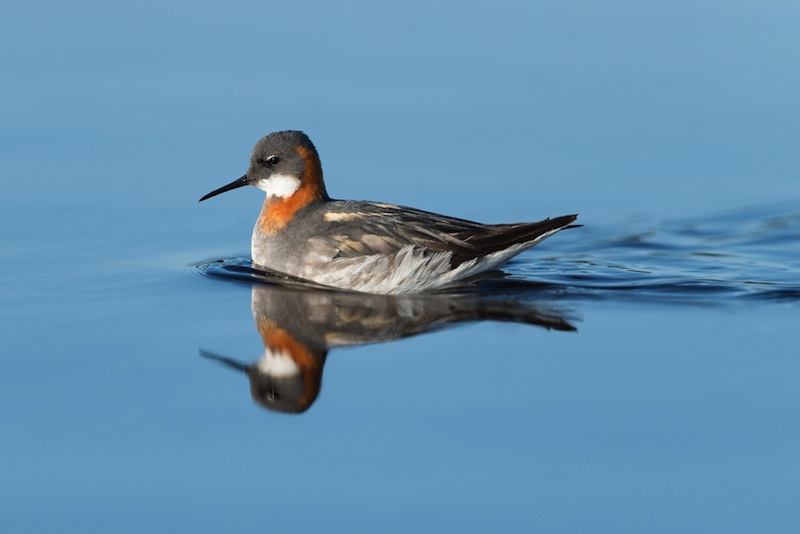Gender-Bending Bird Breaks Migration Record

A gender-bending Scottish bird migrated 16,000 miles, breaking the record for longest European bird migration, according to the Royal Society for the Protection of Birds(RSPB).
The epic round-trip journey, undertaken by a red-necked phalarope, took the well-traveled bird across two oceans. The bird flew from the island of Fetlar in Shetland, Scotland, across the Atlantic, south down the eastern seaboard of the United States, across the Caribbean, and Mexico, ending up off the coast of Peru. After wintering in the Pacific, it returned to Fetlar following a similar route.
It's not the longest bird migration ever, as this list shows, but the feat is still a record-breaker for Europe.
PHOTOS: Birds Take Flight for Fall Migration
Scientists from the RSPB tracked the red-necked phalarope's travels using a geolocator device that weighs less than a paperclip. Ten of the birds were outfitted with the device while on the Scottish isle.
The researchers couldn't believe how long and far the birds traveled. The scientists conducted the study just trying to figure out where the birds spent the winter. Little did they know that these were world-class fliers.
"To think this bird, which is smaller than a starling, can undertake such an arduous journey and return safely to Shetland is truly extraordinary," Malcie Smith of the RSPB said in a press release. "This tiny tracker has provided a valuable piece of the puzzle when building a picture of where phalaropes go when they leave our shores. We hadn’t realized that some Scottish birds were traveling thousands of miles to join other wintering populations in the Pacific Ocean."
Sign up for the Live Science daily newsletter now
Get the world’s most fascinating discoveries delivered straight to your inbox.
The red-necked phalarope had already captured the attention of researchers, but for another reason. It turns the table on tradition gender roles.
During the summer, male birds can be found incubating eggs and raising young. At the same time, the female birds are out strutting their stuff, showing off their brightly colored plumage in hopes of attracting new partners.
In the bird world, often females are rather drab colored while the males are quite colorful. Since female red-necked phalaropes are the aggressive maters, they instead have the showy feather garb.
Migrating Birds Fly Nonstop for Six Months
The red-necked phalarope is one of the UK's rarest birds. It is now only found in Shetland and the Western Isles, and numbers fluctuate between just 15 and 50 nesting males. Scotland marks the southern limit of its breeding range, with the species far more abundant further north, where it occupies wetlands around the northern hemisphere.
As for why the birds travel as they do, food is likely a major driver. In winter, phalaropes congregate in large flocks at sea in regions where currents create upwellings of cold, nutrient-rich water and support blooms of plankton on which the birds feed.
Smith said, "Intriguingly, if the usual wintering area of Scottish red-necked phalaropes is indeed in the eastern Pacific, then this Scottish breeding bird may be directly affected by periodic 'El Nino' events when these Pacific waters become warmer and the supply of plankton is greatly reduced. With that in mind, the project, which we will continue, will be vital when considering any future conservation of this rare and special bird."
This story was provided by Discovery News.









